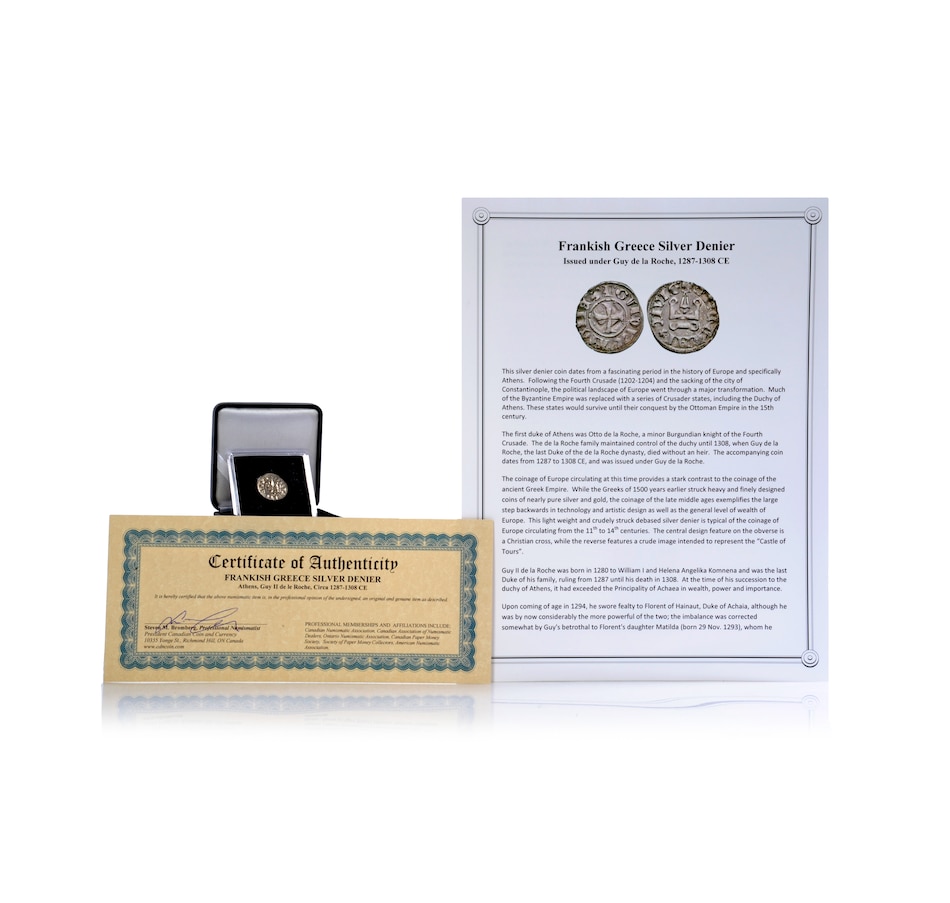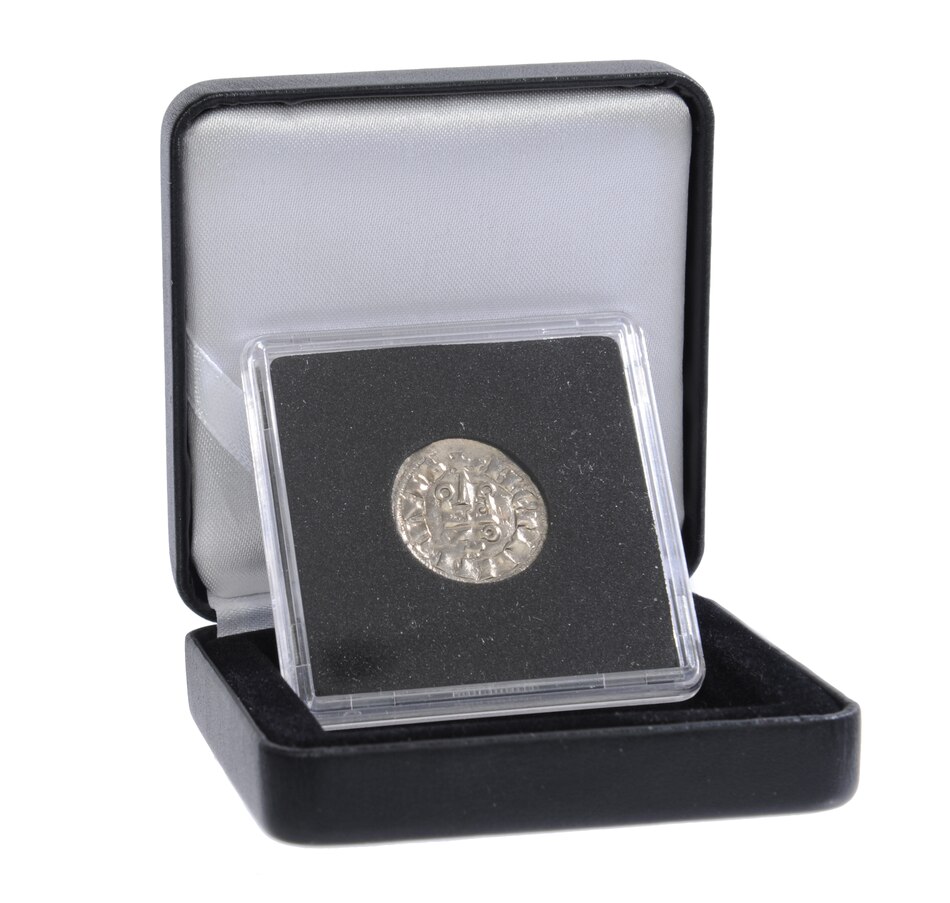Frankish Greece Silver Denier Circa 1278-1308 CE
558-464
$119.95
Shipping: $9.98
or
12 Payments of $9.99
with
Product Overview
This silver denier coin dates from a fascinating period in the history of Europe and specifically Athens. Following the Fourth Crusade (1202-1204) and the sacking of the city of Constantinople, the political landscape of Europe went through a major transformation. Much of the Byzantine Empire was replaced with a series of Crusader states, including the Duchy of Athens. These states would survive until their conquest by the Ottoman Empire in the 15th century.
The first duke of Athens was Otto de la Roche, a minor Burgundian knight of the Fourth Crusade. The de la Roche family maintained control of the duchy until 1308, when Guy de la Roche, the last Duke of the de la Roche dynasty, died without an heir. The accompanying coin dates from 1287 to 1308 CE, and was issued under Guy de la Roche.
The coinage of Europe circulating at this time provides a stark contrast to the coinage of the ancient Greek Empire. While the ancient Greeks 1,500 years earlier struck heavy and finely designed coins of nearly pure silver and gold, the coinage of the late middle ages exemplifies the large step backwards in technology and artistic design as well as the general level of wealth of Europe.
This light weight and crudely struck debased silver denier is typical of the coinage of Europe circulating from the 11th to 14th centuries. The central design feature on the obverse is a Christian cross, while the reverse features a crude image intended to represent the "Castle of Tours."
• Over 700 years old
Includes:
• Frankish Greece Silver Denier Circa 1278-1308 CE
The first duke of Athens was Otto de la Roche, a minor Burgundian knight of the Fourth Crusade. The de la Roche family maintained control of the duchy until 1308, when Guy de la Roche, the last Duke of the de la Roche dynasty, died without an heir. The accompanying coin dates from 1287 to 1308 CE, and was issued under Guy de la Roche.
The coinage of Europe circulating at this time provides a stark contrast to the coinage of the ancient Greek Empire. While the ancient Greeks 1,500 years earlier struck heavy and finely designed coins of nearly pure silver and gold, the coinage of the late middle ages exemplifies the large step backwards in technology and artistic design as well as the general level of wealth of Europe.
This light weight and crudely struck debased silver denier is typical of the coinage of Europe circulating from the 11th to 14th centuries. The central design feature on the obverse is a Christian cross, while the reverse features a crude image intended to represent the "Castle of Tours."
• Over 700 years old
Includes:
• Frankish Greece Silver Denier Circa 1278-1308 CE
About the Brand
Learn More





